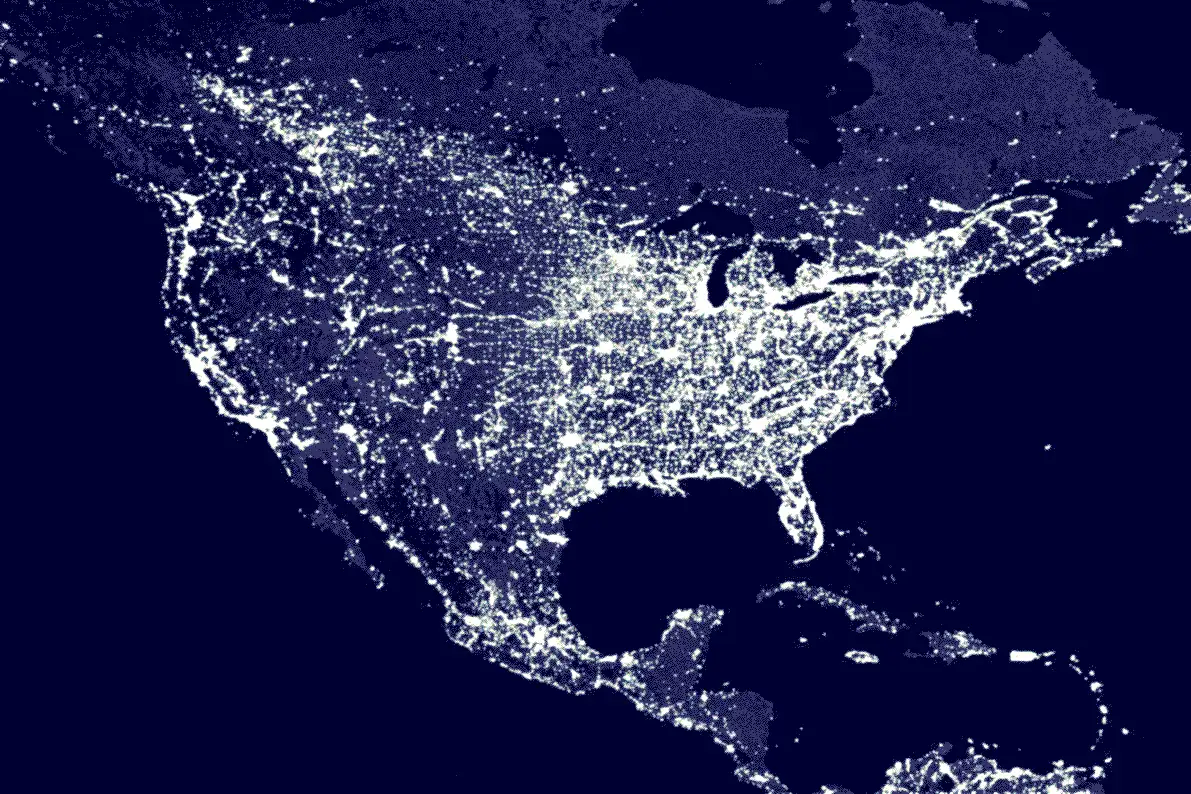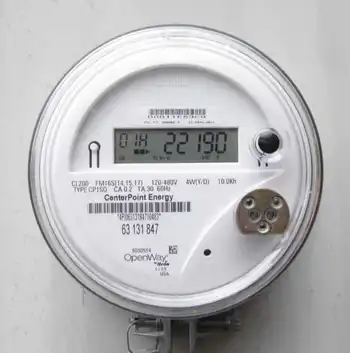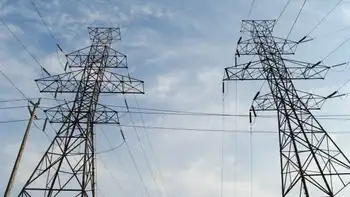High price to keep energy flowing
By Nashua Telegraph
NFPA 70e Training
Our customized live online or in‑person group training can be delivered to your staff at your location.

- Live Online
- 6 hours Instructor-led
- Group Training Available
But nothing is straightforward in energy these days, which helps explain why New EnglandÂ’s power grid has moved from being an ignored, 8,000-mile-long mesh to being at the heart of debate about alternative energy and our economic future.
“There’s a lot of public discussion about the transmission grid, which people didn’t seem to focus on in the past. People just flipped the switch and the lights went on,” said Joe Staszowski of Northeast Utilities, the parent company of Public Service of New Hampshire.
“The grid is no longer the invisible thing. People want to hear more about it,” said Gordon van Welie, chief executive officer of ISO-New England, the organization that oversees the power system. “It is part of the president’s speeches and public policy positions. It has been given a national profile.”
ItÂ’s about time, too.
New England last had major upgrades to the electricity transmission network a quarter-century ago, when nuclear power plants arrived. Power lines last a long time, but not forever, and their age is showing.
The New England grid is undergoing $4 billion in upgrades, many involving the constructing of high-voltage, 345-kilovolt lines, to keep it functioning. That includes the construction of a new substation in Fitzwilliam and a number of upgrades of 115-kilovolt lines in the Monadnock Region. The cost of this work is distributed equally among all New England electric customers.
Billions more are being proposed to upgrade the regional grid “backbone” and make the grid amenable to alternative energy, which will produce huge debate about who should pay.
Yet, despite all that hardware, there is perhaps no better indication of the complexity of today’s grid than the fact that the most innovative change to New England’s power system in recent years doesn’t involve wires or poles at all – it’s an auction.
The innovation is called the Forward Capacity Market, which had its first auction nearly two years ago as a way to use market forces to better ensure thereÂ’s enough electric production available down the road, and also to give an incentive for using less, as well as producing more.
“It’s like ensuring that you will have a hotel to stay in when the time comes to rent a room,” van Welie said.
This market has been a great success, with on-site site power production or efficiency, known as “demand resource,” accounting for about 10 percent of the total energy use in New England. National forecasts say utilities should shoot for 20 percent.
Basically, ISO forecasts electricity demand three years in advance, then runs a so-called descending clock auction to procure the cheapest capacity that can meet all that need. The payments from the auction cover a portion of the fixed cost, such as the expense of creating a power plant, to help encourage investors to fund electric systems, leaving operating costs to be covered by rate-payers based on costs determined at the actual time the power is needed by ISO.
An existing resource, like a PSNH power plant, gets a partial advance payment for a year while a new resource – a new power station or a guarantee of reduced demand – can lock in payment for longer periods, to encourage their development.
What’s particularly interesting is the reduced-demand guarantee, known as “demand-side resource,” as compared to a “supply-side resource” like a power plant.
“One of the big innovations of the Forward Capacity Market – New England was the first region to have done this – is it will allow demand-side resource to provide capacity on equal footing with supply-side resource,” van Welie said.
He explained it this way: A factory owner might want to invest in new lighting and reduce power use by 20 percent; they can bid that reduction into the market and be paid. That’s a “passive” demand-side resource, a fancy way of saying energy efficiency.
Even better, they might have enough flexibility in their production to be able to shut down a factory on demand, which is called “active” demand-side resource. On a hot day when everybody has turned on the air conditioning (even in New England, the biggest power-usage days occur in the summer), the company can be told to shut the factory or delay operations to reduce overall load. In return for this promise, they get an advance payment.
Another type of active demand-side resource is an on-site power plant at a factory, whether an old-fashioned generator or a bunch of solar panels on the roof. A company can pay for part of that investment by promising to stop using the power when itÂ’s needed in the grid.
“Many customers do that: put in behind-the-meter generation and then pay for at least part of that investment through the capacity market,” van Welie said.
The advantage to the grid is that it reduces the need for more power plants that only get turned on now and then to meet peak demand – such power is vastly more expensive than “baseload” power, which gets generated all the time – and can also reduce the need to build more power lines.
This is an example of what might be called the first iteration of the next-generation power grid. Instead of just pumping out as much power as each user wants whenever they want it, the Forward Capacity Market allows a back-and-forth communication between customers and providers to improve.
This only applies to wholesale customers rather than homeowners, because itÂ’s easier to deal with a small number of large users than hundreds of thousands of houses and apartments.
Making it possible for homeowners to be this flexible will require a move from the old model of power grid as “dumb pipes” to that term that on everybody’s lips from President Obama on down: smart grid.
The problem with making the grid smarter isn’t the wires, it’s the electronic “brains” at each end.
Control centers and homes need to be able to talk back and forth in real time so you can let them know that your rooftop wind turbine is pumping out excess energy for the grid to use, and they can let you know they need your refrigerator to cut back use for an hour this afternoon – or, in a real daydream scenario down the road, both sides can negotiate over who gets to use the energy stored in your electric car’s battery.
The advent of large-scale alternative energy such as the Lempster Mountain Wind Farm or the many, bigger wind farms cropping up in Maine adds to the need for a smart grid. Old-fashioned power plants, fired by oil, natural gas, coal or nuclear power, are dependable, producing power at least 80 percent of the time. Wind farms, on the other hand, generate power less than 33 percent of the time; solar panels are no better.
The grid has to be more flexible to handle these surges.
The first step is smart meters, or upgraded versions of the electric meters on your house.
Current meters only measure how much total power has entered the house. Newer meters can keep track of when the power arrives so utilities can institute “time of day” pricing, charging more for power when demand is high as an encouragement for people to shift their use to down times – running the dishwasher at night, for example – to reduce the need for producing expensive peak-time power.
Hypothetical future versions could connect to hypothetical “smart appliances,” which automatically ramp up or down as needed.
Alas, even time-of-day meters are few and far between these days.
“New England and Alaska have the lowest rate of advanced meters in the country – less than 1 percent,” van Welie said.
On the other hand, he added, smart-meter technology is still in its infancy, so “lagging may not turn out to be a bad thing.
“We’re starting now and we’ll be using the best technology,” he said. “I’m not that troubled by (lack of smart meters).
“The good news story has been we’ve seen this significant growth of demand-response at the wholesale level – in that regard, the New England region is ahead of the rest of the nation,” he said.
The 800-pound gorilla in the room, not surprisingly, is cost.
For example, smart meters cost far more than standard meters. In the Canadian province of Ontario, for example, one estimate is that every customer will pay up to $4 extra each month just to have the meters, and related infrastructure, installed. The hope is that the meters will allow a reduction in use that will save money in the long run, but the initial cost is huge and must be parceled out somehow.
Then thereÂ’s the grid itself: the wires and poles. Everybody wants more alternative energy, but it will require reworking much of the grid.
The old power model involved a relatively small number of big producers relatively near customers – not in cities themselves (that was the 19th-century model) but often in the same county or portion of the state. Over the years, large and intermediate connections have been built with this in mind, rather like interstate highways connecting cities, with major arterial roads branching off.
Alternative energy – wind farms, hydropower dams, the open space needed for large solar farms – must usually be placed in remote places where there aren’t enough power lines to carry all the power they produce.
For example, PSNHÂ’s parent company, Northeastern Utilities, is talking with Hydro Quebec about jointly building a 1,200-megawatt power line that would run to southern New Hampshire from hydropower plants up near Hudson Bay.
ISO-New England has developed some rough ideas for expanding the regional backbone to make it easier to shift power around from alternative energy at remote sites.
Cost estimates start at $3.5 billion and move up to $25 billion – sums that would give anybody pause.
The transmission issue is already hurting alternative energy, stalling the development of wind farms and wood-burning power plants north of the Notches. Perhaps $100 million or so of upgrades are needed to the Coos Loop, a portion of the grid connecting Coos County to southern New Hampshire, so that enough electricity could be shipped south to justify the construction of the new power plants.
The question is: Who should pay that bill?
“If you upgrade the loop, should the generators pay, should North Country folks pay, should New Hampshire customers pay, should New England customers pay?” said PSNH’s Staszowski. “This question – who pays? – is not only local and regional, but national.”
For example, some of the best wind power in the U.S. exists in the upper Midwest, which is empty and flat enough to make huge wind farms feasible.
Bringing that power to New York and New England could cost as much as $150 billion in new transmission lines.
It could offset billions of dollarsÂ’ worth of imported oil and new power plants, not to mention helping cut pollution, but thereÂ’s still the up-front cost to parcel out.
“If they produce tens of thousands (of megawatts) of wind in the Dakotas and want to ship it to the East Coast and the South, they need to build big transmission lines. Who should pay?” Staszowski said. “There’s really a big national debate on who will pay for transmission and who are the real beneficiaries of it.”
The recession has reduced electricity consumption, trimming the price of fossil fuels, which has made the complicated question of cost even more complicated.
“That made it much harder to economically justify renewable-energy projects – it’s a harder justification than it was 12-18 months ago,” van Welie said. “Some of the transmission investment is also being re-examined.”
This reflects the new reality, he said: Even as more attention is being devoted to the grid, more people realize what it can make possible.
“There are lots of possibilities,” he said at a recent gathering of the New Hampshire Business and Industry Association.
“The question is, how far do we want to go and what makes economic sense?”











